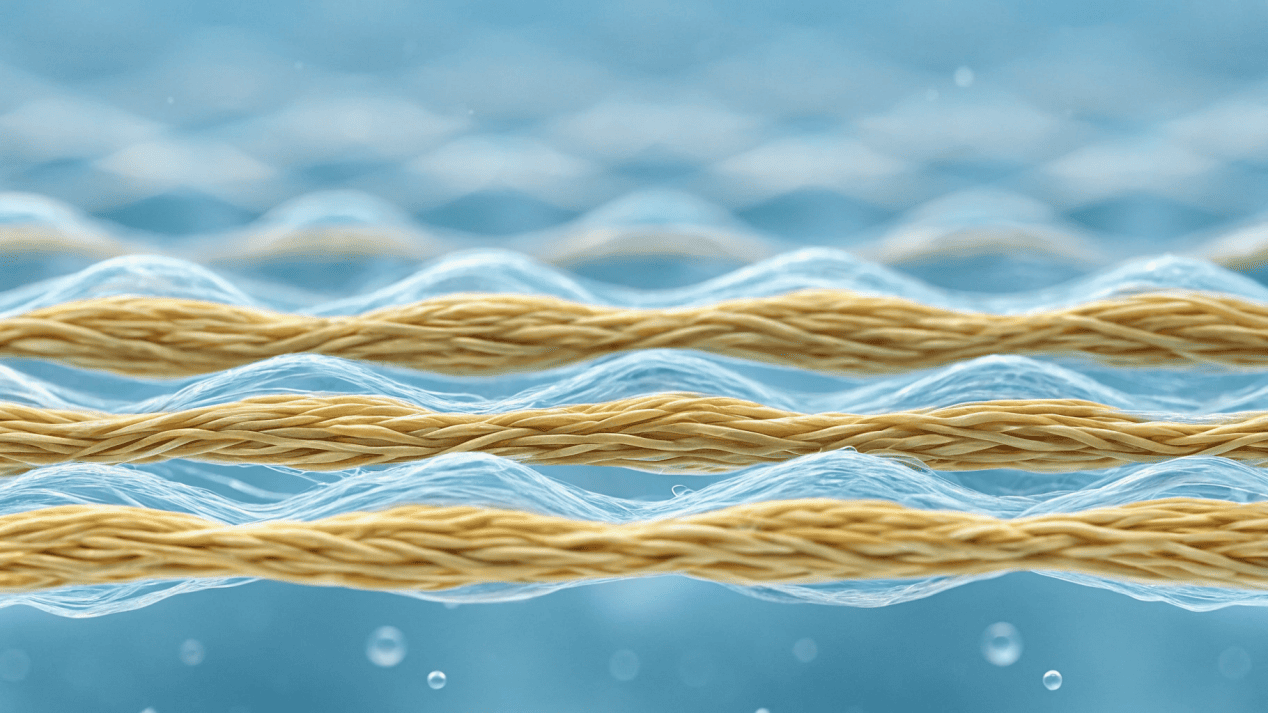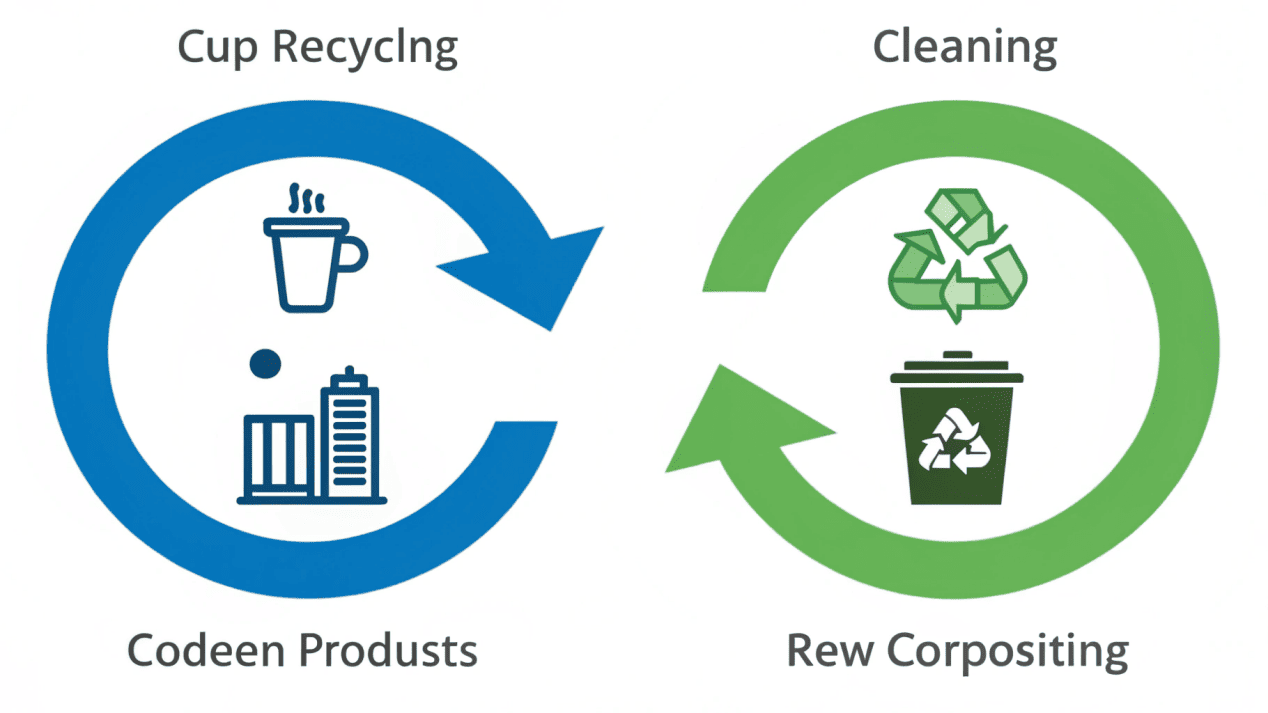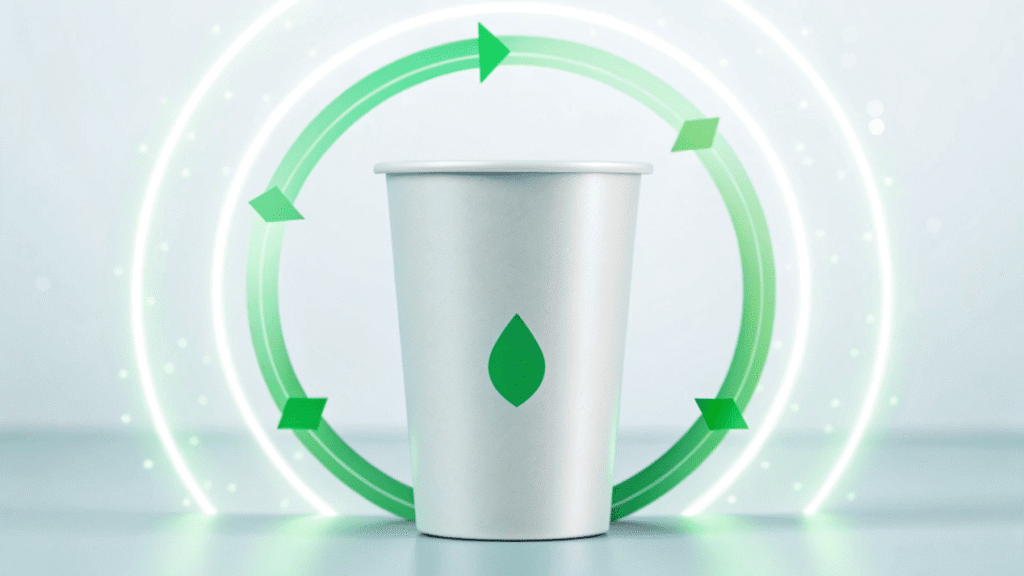Paper cups always felt like a compromise. You avoided plastic but still created hard-to-recycle trash. But technology is finally delivering a truly sustainable future for packaging.
The future is circular. Cups will use new bio-coatings that allow them to be easily recycled with normal paper, or they will be fully compostable. This shift is driven by new laws and strong customer demand for real environmental action.

For years, I felt like we were stuck. My clients wanted a green solution, but the options were limited. You had "compostable" cups in cities with no composting facilities, and "recyclable" cups that recycling centers would reject because of the plastic lining. It was frustrating for everyone. But in the last few years, I've seen more real innovation than in the previous decade combined. The future isn't just a vague promise anymore; I can see it, and we are helping to build it in our factory right now.
Will New Materials Make Paper Cups Truly Recyclable?
Your current "recyclable" paper cups often end up in the trash. This makes your sustainability efforts feel dishonest, and you worry about misleading your customers.
Yes. The biggest breakthrough is advanced water-based coatings. Unlike old plastic linings that are fused to the paper, these new coatings wash away easily in the recycling process, making the cup genuinely recyclable in standard facilities.

The number one problem with old paper cups was the PE (polyethylene) plastic lining. From an engineering standpoint, it was great at holding liquid, but it was basically glued onto the paper fiber. Standard recycling pulpers couldn't separate the plastic from the paper, so the whole cup was treated as contamination. The innovation that changes everything is the move away from laminated plastic to smart coatings.
The Aqueous Coating Solution
The new industry standard is the aqueous, or water-based, coating. Think of it less like a plastic sheet and more like a very advanced, waterproof paint. When one of these cups goes to a recycling facility and is mixed with water, this coating is designed to break down and wash away from the valuable paper pulp. This simple change is revolutionary. It means the cup can be thrown into the same recycling bin as cardboard and newspaper.
Next-Generation Bioplastics
For the compostable route, things are also improving. While PLA is great, new biopolymers like PBS (Polybutylene Succinate) are emerging. These materials can offer even better heat resistance and are designed to biodegrade more efficiently, making the composting process even more effective.
| Coating Type | Old PE Lining | New Aqueous Coating |
|---|---|---|
| Material Source | Petroleum | Water-based polymer |
| End-of-Life | Landfill | Standard Paper Recycling |
| Key Feature | Fused to paper | Washes off paper |
How Will Plastic Bans Change the Paper Cup Industry?
New single-use plastic bans are coming. You are worried about having to find compliant packaging at the last minute, which could be expensive and stressful.
Plastic bans are forcing the industry to innovate faster. Using truly recyclable or compostable cups is becoming a legal necessity, not just a marketing choice. This accelerates the adoption of new, genuinely sustainable materials across the entire market.

As an engineer, I see regulations not as a problem, but as a catalyst for innovation. For years, many big companies were slow to adopt better materials because the old, cheap way was "good enough." Now, governments around the world are saying it is no longer good enough. This is a massive opportunity for businesses that are prepared.
From Compliance to Leadership
I tell my clients not to think about this as just avoiding a fine. Think about it as future-proofing your business. When you proactively switch to a truly recyclable or compostable cup, you send a powerful message. You show your customers and competitors that you are a leader who is prepared for the future, not a follower who is forced to change. Adopting these new cups now means you will never have to worry about a new plastic ban. Your packaging will already be years ahead of the law. This is a strategic move that builds brand resilience and trust in a rapidly changing world. It turns a regulatory headache into a competitive advantage.
Can Paper Cups Ever Be Part of a Circular Economy?
Disposable cups seem inherently wasteful. The entire "take, make, and throw away" model feels broken, and you want to be part of a better system.
Absolutely. The goal of a circular economy is to eliminate waste. New paper cups are designed for one of two "circular loops": entering the paper recycling stream to become new products or entering the organic stream to be composted into new soil.

The idea of a circular economy is simple: nothing should be wasted. Instead of a product's life ending in a landfill, it should become the raw material for something new. The future of paper cups is designed around this very idea, with two distinct pathways.
Loop One: The Paper Recycling Stream
This path is for cups with water-based coatings. You use the cup, and then you toss it into a paper or mixed recycling bin. At the recycling facility, the coating is washed off, and the paper fibers are recovered. Those fibers are then used to make new products, like cereal boxes, paper towels, or shipping cartons. The material keeps cycling through the economy.
Loop Two: The Organic Composting Stream
This path is for certified compostable cups with PLA or other bioplastic linings. You use the cup, and it goes into a green bin along with food scraps. At an industrial composting facility, the cup and the food waste break down together into nutrient-rich compost. This compost is then used to enrich soil and grow more plants—which can then be used to create the raw materials for more compostable cups. It’s a perfect, natural loop.
Do Customers Really Pay Attention to Sustainable Packaging?
Eco-friendly cups cost more. You are worried it is a wasted expense on something that customers don't really notice or care about.
Yes, more than ever. Consumers are tired of "greenwashing" and actively support brands that demonstrate genuine responsibility. A truly sustainable cup is tangible proof that you care, building trust and loyalty that directly impacts your bottom line.

A few years ago, I had a client who owned a chain of cafes. He was very skeptical about switching to more expensive compostable cups. "My coffee is the best," he told me, "that's all that matters." We ran a trial at one of his locations. We put up small signs explaining that the new cups could be composted with food waste.
Within a month, he called me. He told me that not only were customers noticing, but they were thanking his baristas. His social media mentions for that location went up, with people posting pictures of the cups and praising the change. The cup became a talking point. It was a physical object that proved his brand shared its customers' values. He realized the cup wasn't just a cost; it was a powerful marketing tool. It was a handheld billboard that told a story of responsibility. That trust is something you can't buy with traditional advertising. It’s earned with authentic actions.
Conclusion
The future of paper cups is smart, circular, and here now. Embracing these new materials is not just good for the planet—it is essential for building a modern brand.
